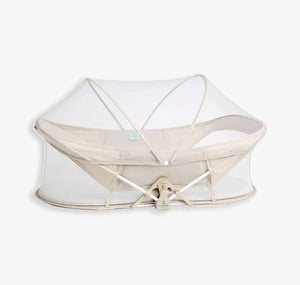The Ultimate Guide to Swaddling: Types, Materials, and How-Tos
Swaddling is an age-old practice used for centuries to soothe and comfort newborns. The method involves wrapping a baby snugly in a blanket or other soft material to mimic the feeling of being in the womb. Swaddling can help babies feel more secure and sleep more soundly, but it's essential to do it correctly to ensure your baby's safety.
Several different types of swaddles are available on the market today, each with unique features and benefits. However, the most common types of swaddles include traditional swaddles, Velcro swaddles, and stretchy swaddles.
Traditional swaddles are made from a rectangular fabric, such as a receiving blanket or muslin. They are wrapped around the baby and tucked in securely to keep the baby feeling snug and secure. Traditional swaddles are versatile and can be used in various ways, making them a great option for many parents.
Velcro swaddles are similar to traditional swaddles, but they feature a Velcro fastener that allows you to adjust the fit of the swaddle. This can be especially helpful for new parents, as it can be difficult to get the right amount of tension with a traditional swaddle. Velcro swaddles also tend to stay in place better than conventional swaddles, which can be especially helpful for wiggly babies.
Stretchy swaddles are made from a stretchy material, such as cotton or bamboo, and are designed to be wrapped tightly around the baby. These swaddles are often used for premature babies or babies with special needs, as they provide greater support and security. Stretchy swaddles can also be helpful for parents who are new to swaddling, as they are often easier to use than traditional or Velcro swaddles.
When choosing a swaddle, it's essential to consider the material. Cotton is a popular choice for swaddles as it is soft, breathable, and hypoallergenic. Muslin is also a great option as it is lightweight, breathable, and gentle on a baby's delicate skin. Bamboo is another popular option as it is soft, breathable, and naturally antimicrobial. Avoid using synthetic materials, such as polyester or nylon, as they can trap heat and can make your baby too warm.
When it comes to swaddling, the key is ensuring that the baby is wrapped snugly enough to feel secure, but not so tightly that they can't move their arms and legs freely. It's also important to make sure that the swaddle is not too loose, as this can increase the risk of the baby wriggling out of the swaddle and getting tangled up in the blanket.
To swaddle your baby:
- Start by laying the swaddle blanket on a flat surface with one corner pointing towards you.
- Fold the top corner down to create a triangle.
- Place your baby on the blanket with the head just above the folded corner, leaving enough room for the face to be visible.
- Take the left corner of the blanket and bring it across your baby's body, tucking it under their right arm.
- Take the right corner of the blanket and bring it across your baby's body, tucking it under their left arm.
- Take the bottom corner of the blanket and bring it up over your baby's feet, tucking it in securely.
It's important to remember that babies grow quickly, so it's important to check the fit of the swaddle regularly. If the swaddle is too tight, the baby's hips and legs may not be able to move freely, which can lead to developmental issues. If the swaddle is too loose, the baby may be able to wriggle out of it and become tangled up in the blanket. Always check the fit of the swaddle and adjust it as needed to ensure that your baby is safe and comfortable.
Another important factor to consider when swaddling is the age of your baby. The American Academy of Pediatrics recommends that parents stop swaddling their babies at around 2-3 months of age or as soon as the baby starts to roll over. This is because swaddling can restrict a baby's movement and make it difficult for them to roll over, which is an important developmental milestone.
It's also important to note that not all babies like to be swaddled. Some babies prefer to be left free to move their arms and legs, while others may find the feeling of being wrapped up to be comforting. If your baby doesn't seem to like being swaddled, don't force it. Instead, try using a different type of sleep aid, such as a pacifier or a white noise machine.
In conclusion, swaddling can be a great way to soothe and comfort newborns. It can help babies feel more secure and sleep more soundly, but it's important to do it correctly in order to ensure the safety of your baby. There are several different types of swaddles available on the market today, each with their own unique features and benefits. Consider the material, fit and age of your baby when choosing a swaddle. Always check the swaddle's fit regularly and stop swaddling your baby when they start to roll over.
T you for taking the time to read about Kids Wagon's range of swaddles! We understand the importance of comfort and security for your little one, and that's why our swaddles are designed to grow with your baby through every stage of their development. Whether you're looking for a cosy wrap for a newborn or a larger size for an active toddler, we have the perfect solution. So, why not give your baby the gift of a good night's sleep, and check out our full range of swaddles today!











